Dr. Sarika Tiwari, Pune
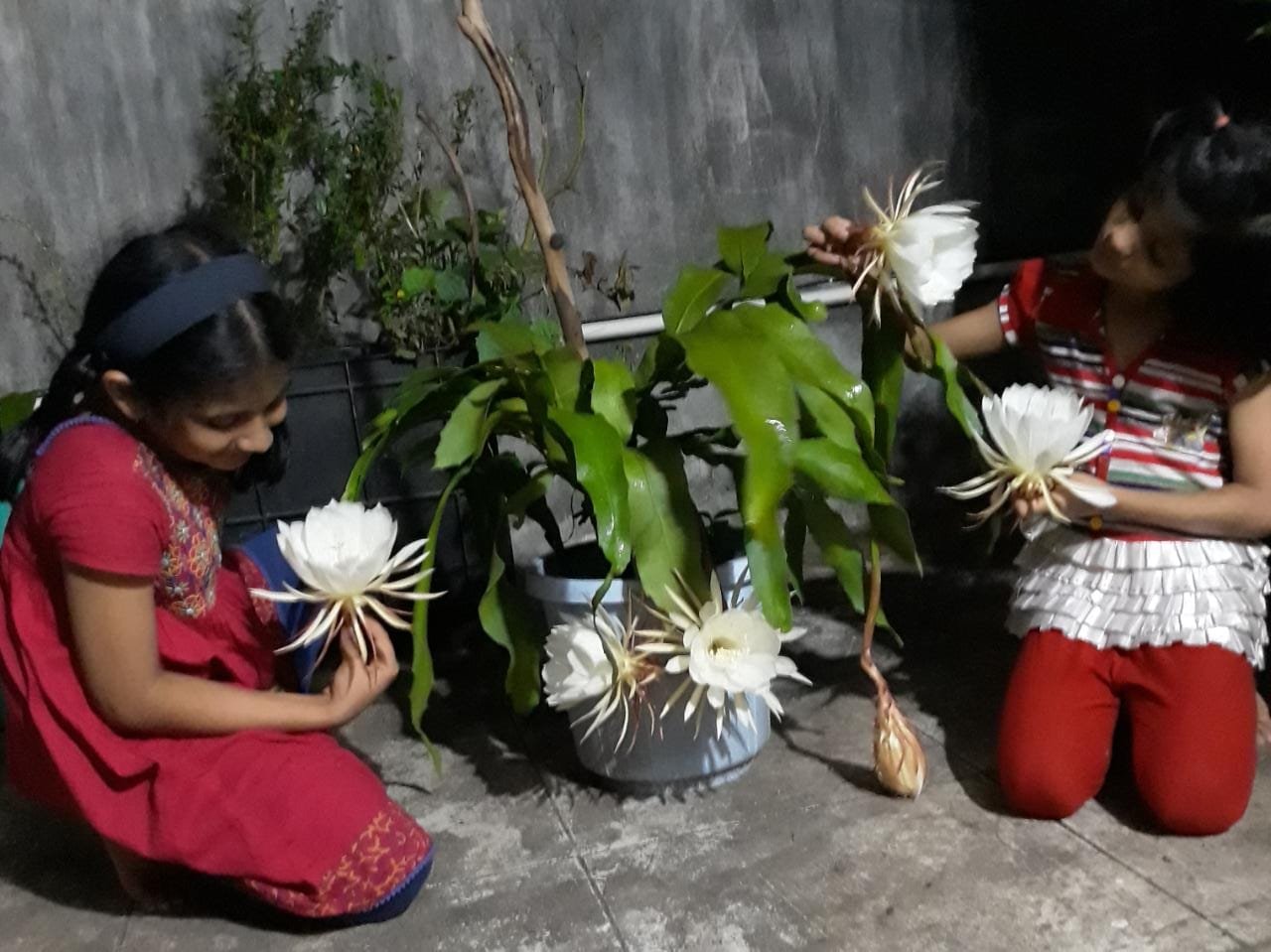
Here is why and how Sarika started garden
Meet Dr. Sarika Tiwari, a homeopathic consultant by profession. A doctor and mother of two, Sarika feels that “Grow your own food” is the need of time.
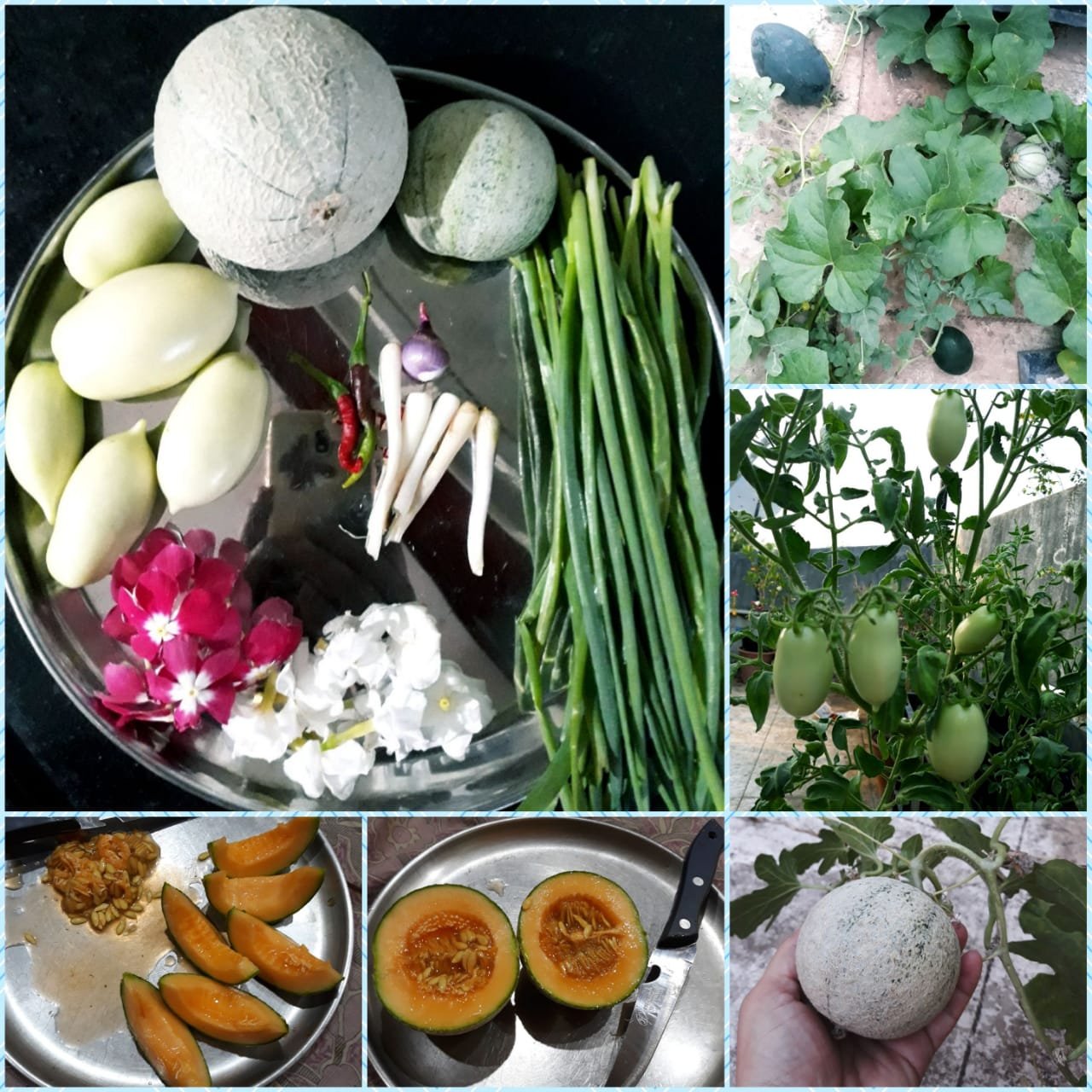
She was concerned about toxic chemical pesticides used on fruits and vegetables, that we and or kids consume. Often, growth hormones are injected to boost plant growth. Sarika feels growth hormones are responsible for increase in precocious puberty. She, as a doctor frequently comes across these cases now-a-days.
However, we insist on washing vegetables and fruits, well, kids will be kids. They will say they have, but they will eat fruits and veggies without washing them first. This concern added to her anxiety. She realized, only way to ensure our kids are not exposed to such harmful chemicals, is to grow your vegetables yourself so that you have complete control.
It is all play of supply and demand, she adds. When farmers will realise toxic-chemical-free vegetables is what people want, they will grow it.

Sarika started gardening with the aim that at least for 15 days of the month, her family would have home-grown vegetables. Quite a dream, isn’t it? Yes! especially for Sarika, who did not have any knowledge and experience of gardening.
She started with a few pots. Sarika resides in a row-house. The place where she kept these pots, did not receive any sunlight. Her first attempt was not so successful.
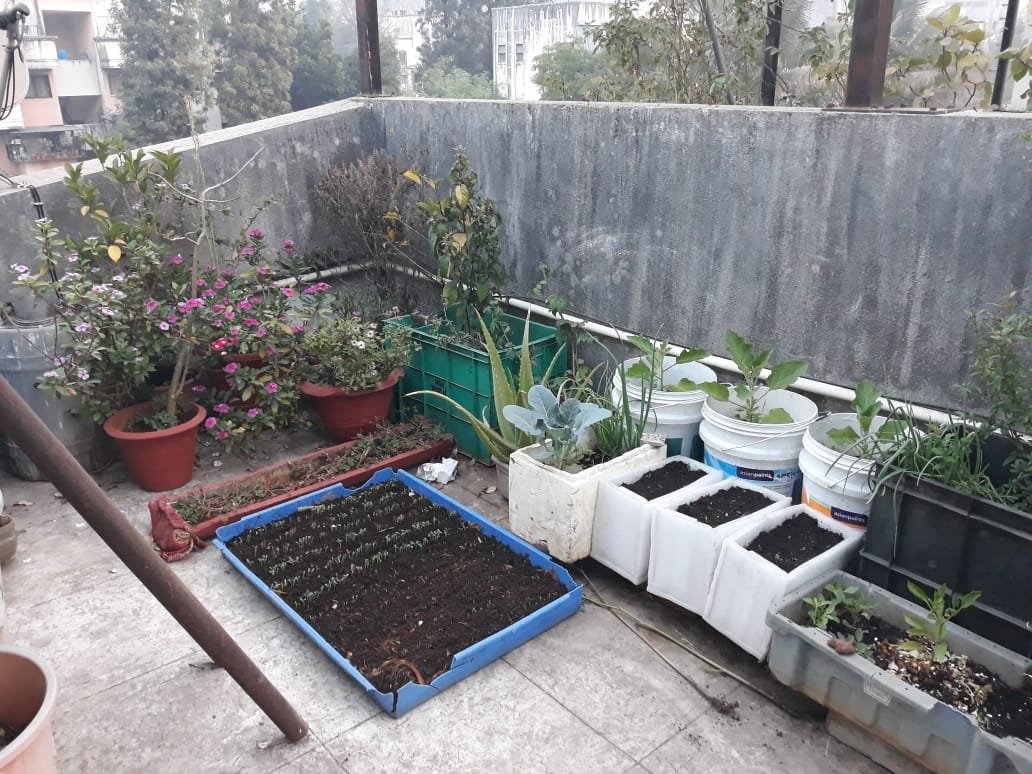
When she attended a terrace gardening course, she realized lack of sunlight was the challenge for her plants. That is when she decided to utilize her terrace and then the garden started taking shape.
Waterproofing
Sarika was apprehensive about leakage problem. But the in-built waterproofing has proved enough. She hasn’t faced any issue because of terrace garden.
NOTE: This remains a grey area. Some experts assure that our terraces are built to face 4 months of monsoon; water drained from the planters will not do any damage. While some feel waterproofing is necessary before you embark on terrace gardening. Terrace gardeners too differ on this.
Planning
Like any other project, deciding objective is necessary for terrace garden. Here we do not have acres and acres of land at disposal. Hence to get maximum out of a few hundred sq. feet, we need to decide exactly what we wish to cultivate.
For Sarika, her garden is the golden balance between beauty and utility. She wanted vegetables and fruits, but also the colorful liveliness of flowers.
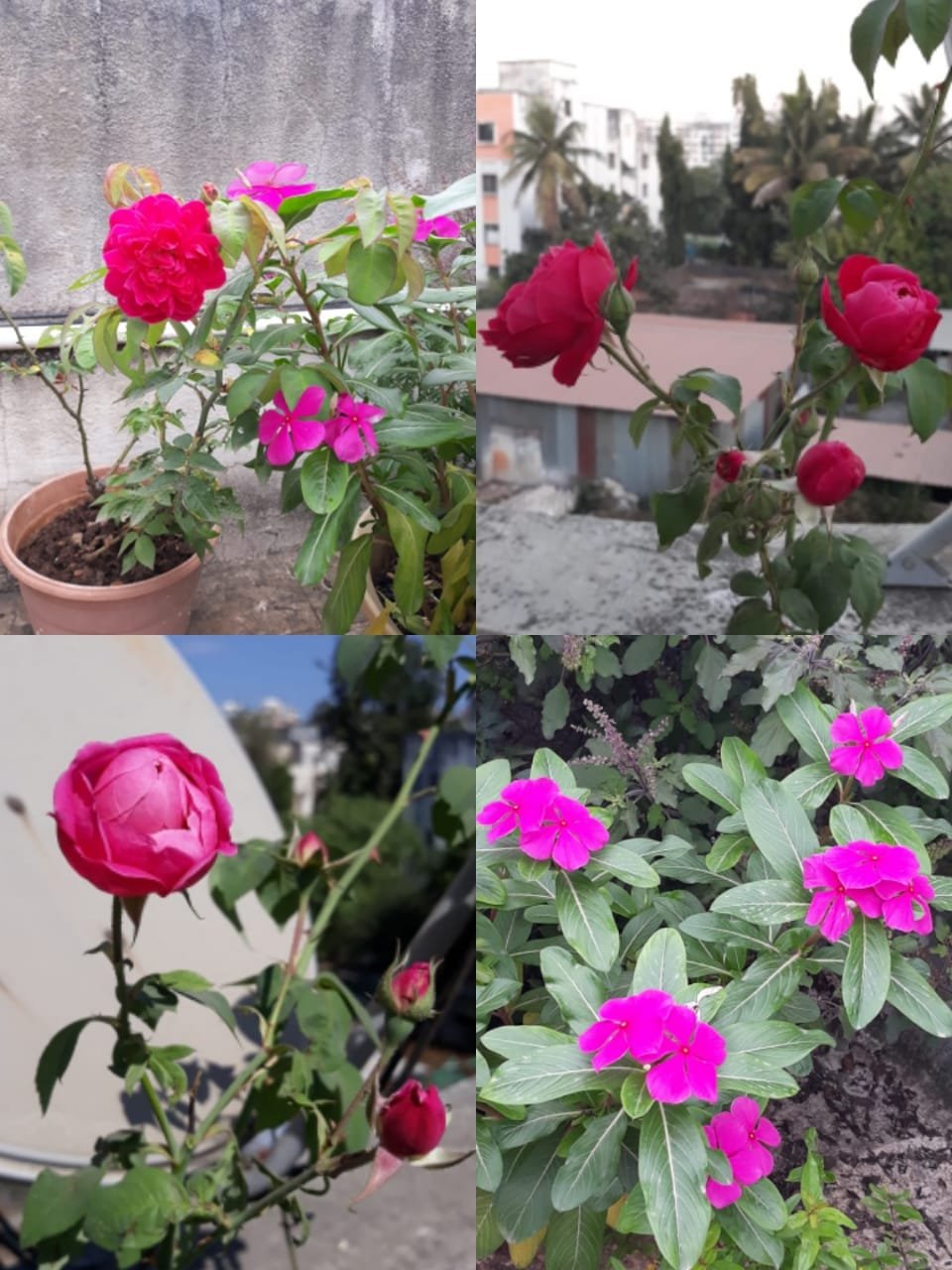
For beginners, Sarika suggests, start with easy-growing, low-maintenance plants like chilies, curry leaves plant.
She made use of cracked drums, boxes as planters. It is a very important point. We often feel we need to invest a lot when creating a garden. But it need not be so. Like Sarika, we can use the material available around us. Leaky buckets, old plastic containers could serve as planters.
Coconut husk is placed at the base of the pot. It provides aeration, allows excess water to drain.
If you do not have enough coconut husk, you can always ask your friends and family. They would happily donate it to you 😊
Preparation
Soil is formed with erosion of rocks. Many minerals from the parent material are present in the soil. When we create soil-less gardens, do we miss out on these minerals? Answer is yes. Challenge is that we do not know exactly what we might be missing and what we are depriving the plant of.
Sarika uses some soil in her pots, though 95% are dry leaves. Her garden is “soil less” but not soil-less.
Sarika describes her method as, “Alternate layers of dry leaves, cow-dung manure + soil and adding some cocoapit if available. Ultimately it comes to 80% dry leaves and 20% cow-dung manure + soil”.
She adds egg-shells and banana peels as source of calcium and potassium respectively. Both are essential elements for plant growth.
How does she prepare compost?
Sarika does not have trees in her premises, so no dry leaves. She started composting kitchen-waste. One day she spotted maggots. They really scared her, and she decided to change the method.
Here, again the sun came to her rescue. She realized, if she dries kitchen-waste, challenges reduce. For some time, she followed this method. After kitchen-waste was sun-dried, she used to deposit it in the planters.
Do some nutrients are also lost along with the water when kitchen-waste is dried? Well, Sarika wondered. Hence, she began depositing kitchen waste as it is in the planters, without drying.
And yes, her concern was right. Because, with this method, produce was better.
And surprisingly, no problem of insects or smell.
NOTE: This method is called “In-situ composting”. Composting in the place exactly where it would be utilized. Since, there is plenty of aeration, there was no problem of foul smell. If enough aeration is not there, then in absence of oxygen, process turns “anaerobic”. Result of anaerobic digestion is methane. Methane has foul smell. This is the point where many give up composting. But it is easily preventable and rectifiable problem.
Aeration, Temperature and Moisture (ATM) are vital for composting. As far as Pune is concerned, we don’t need to worry about temperature. It is ideal for microbial growth in the compost. Moisture is a tricky factor. Too much and too little, both are bad.
For more about composting, do download the guide here, https://brownleaf.org/wp-content/uploads/2018/10/How-to-manage-dry-leaves.pdf
Where to get dry leaves?
Initially, Sarika used to collect leaves from a nearby playground. Then she came to know about Brown Leaf and started collecting dry leaves regularly from leaf-donors around.
In tropical regions, deciduous trees shed leaves in winter. Leaf fall starts around November and continues till June. Dry leaves is challenge for people. Often dry leaves are burnt since that seems a convenient option. At the same time, there are gardeners, who need dry leaves for compost.
Why not bring “availability” and “requirement” together? (For details about this initiative, www.brownleaf.org)
Using dry leaves from your own garden and from surrounding areas will prove to be a win-win situation.
Regular Care
In Sarika’s case, her terrace does not receive equal sunlight all throughout the year. She needs to shift her pots as per summer and winter solstice. Observation is vital in gardening.
Compost, unlike soil does not become compact. When compost is used, roots get enough aeration and they easily grow.
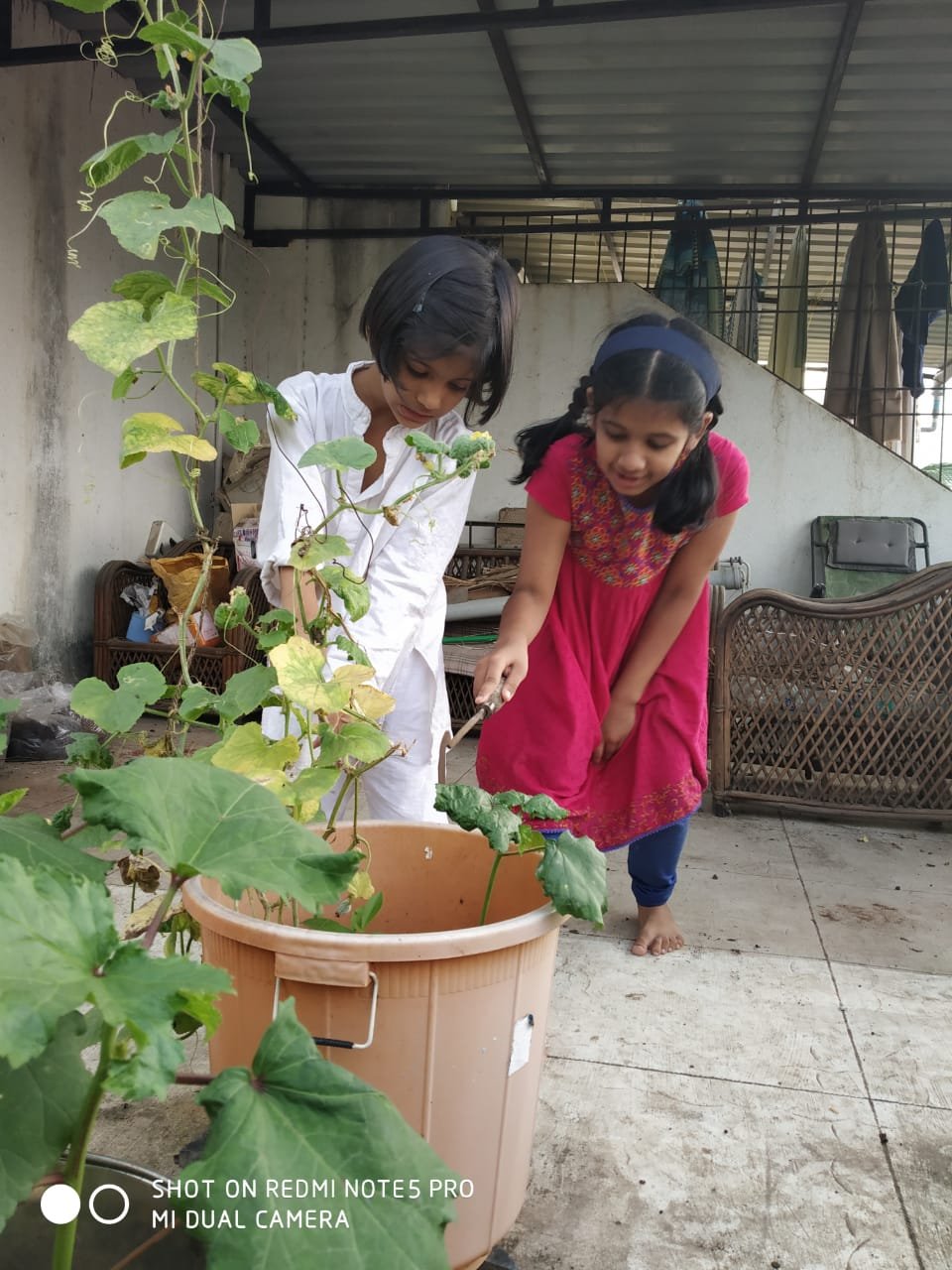
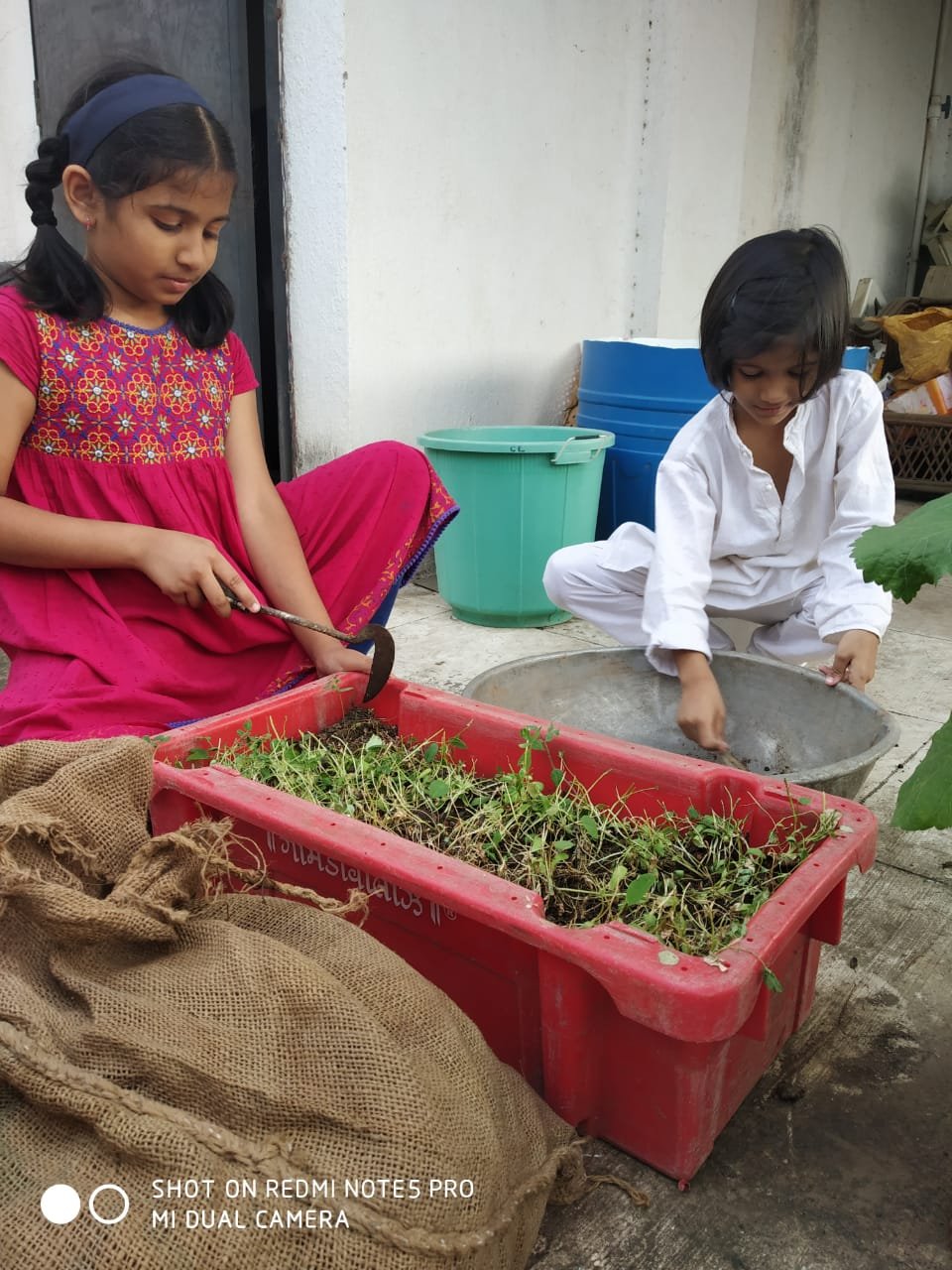
Watering
Mulching helps soil retain moisture and thus less water is needed. It also reduces speed of water. Water percolates gradually in the container, thus preventing leaching of nutrients.
Sarika stresses importance of mulching. She had gone out of station on a family holiday for 10 days. She was concerned whether plants will survive without water for that duration. To her surprise, she on her return found plants were not at all affected.
Let leaves that fall in the plant bed be. Don’t sweep them off. To read more about mulching, do read our blog, https://brownleaf.org/mulch/
Produce from terrace garden
Vegetables
Lemon, Fenugreek (मेथी), माठ, tomato, cucumber (काकडी), spinach (पालक), brinjal (वांगी), chilies (मिरच्या), cherry tomato, ridge gourd. (दोडका), Pumpkin (लाल भोपळा), capsicum (भोपळी मिरची), ओवा, curry leaves (कढीलिंब), ginger(आले), radish(मुळा), ladyfinger(भेंडी), broccoli, cluster beans(गवार), cabbage(कोबी), cauliflower(फ्लॉवर), chavalai(चवळई), carrot(गाजर), beet(बीट), spring onions(कांदा पात), garlic(लसूण), beans (घेवडा), beetle nut (सुपारी)

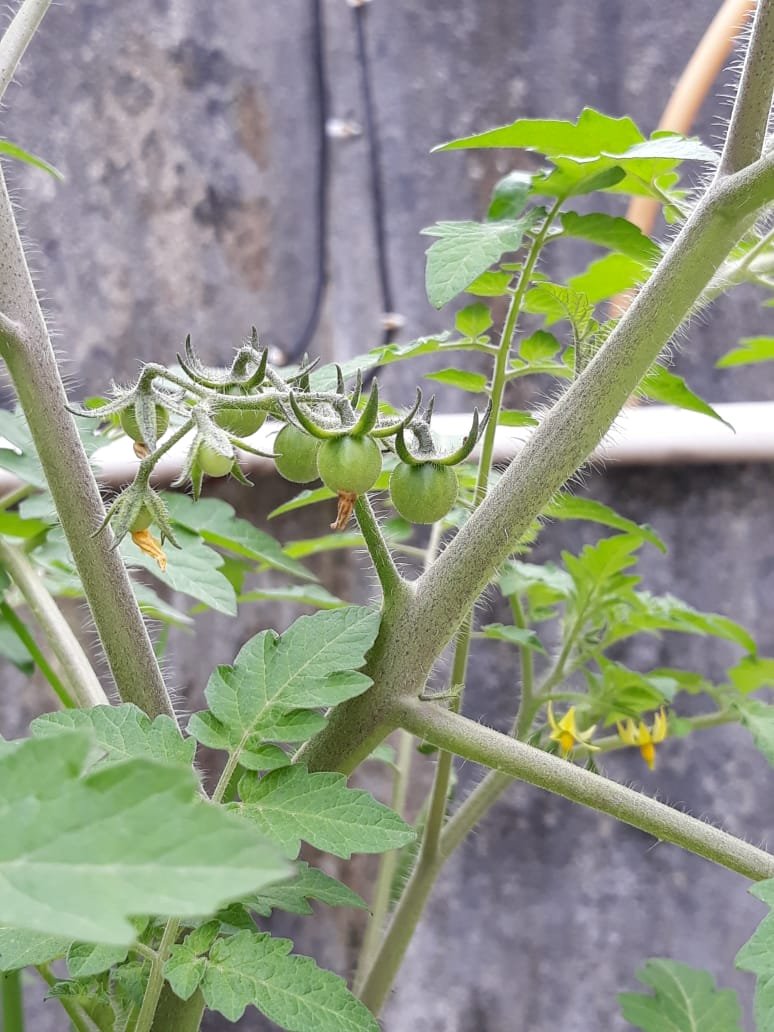
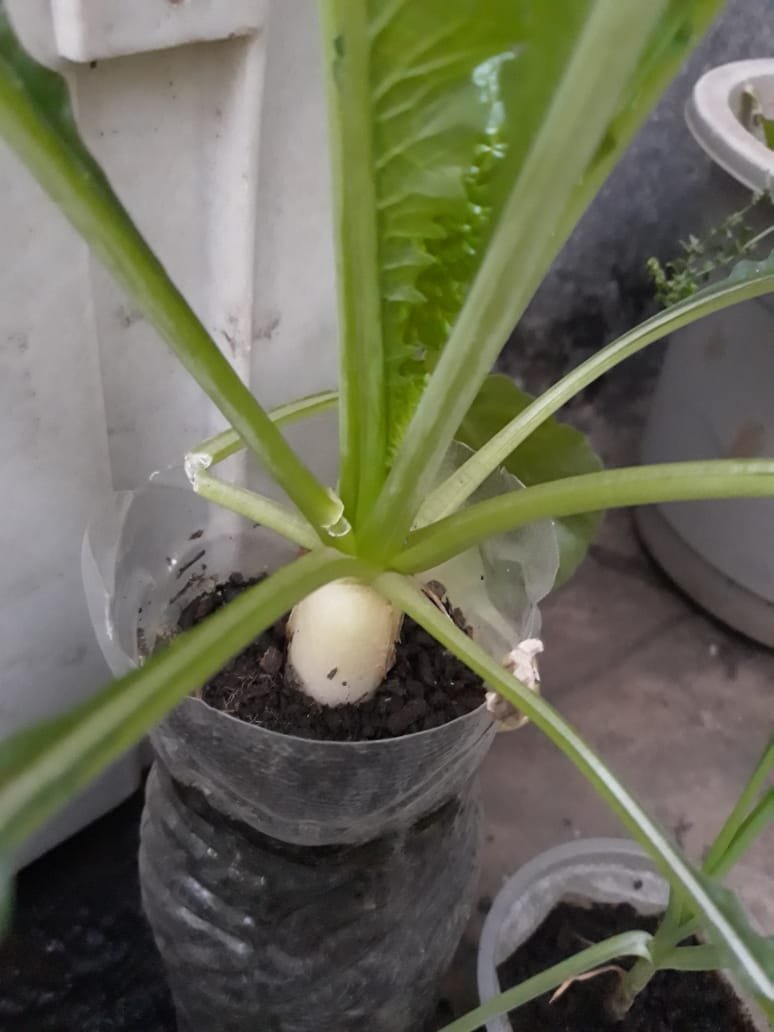
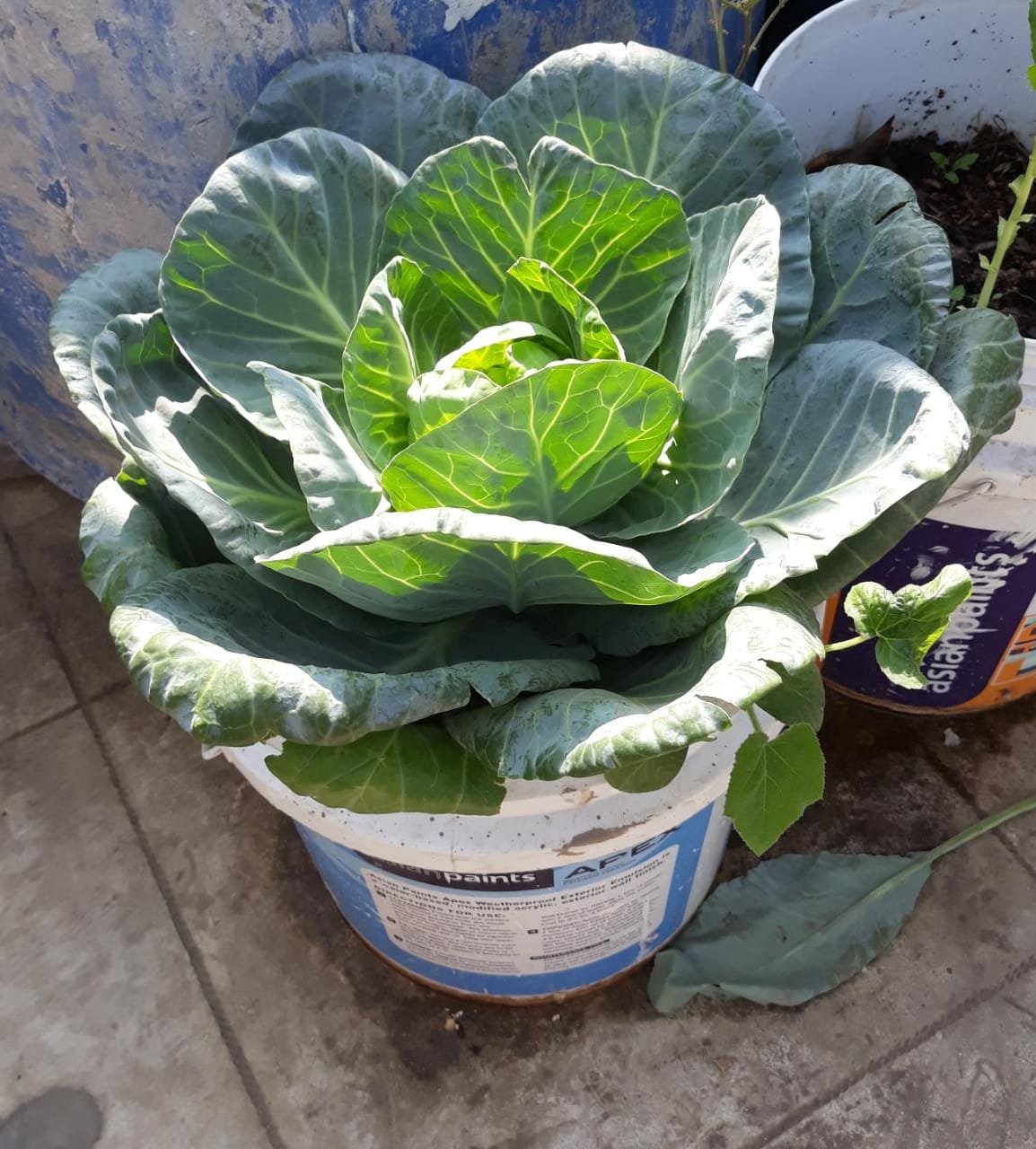
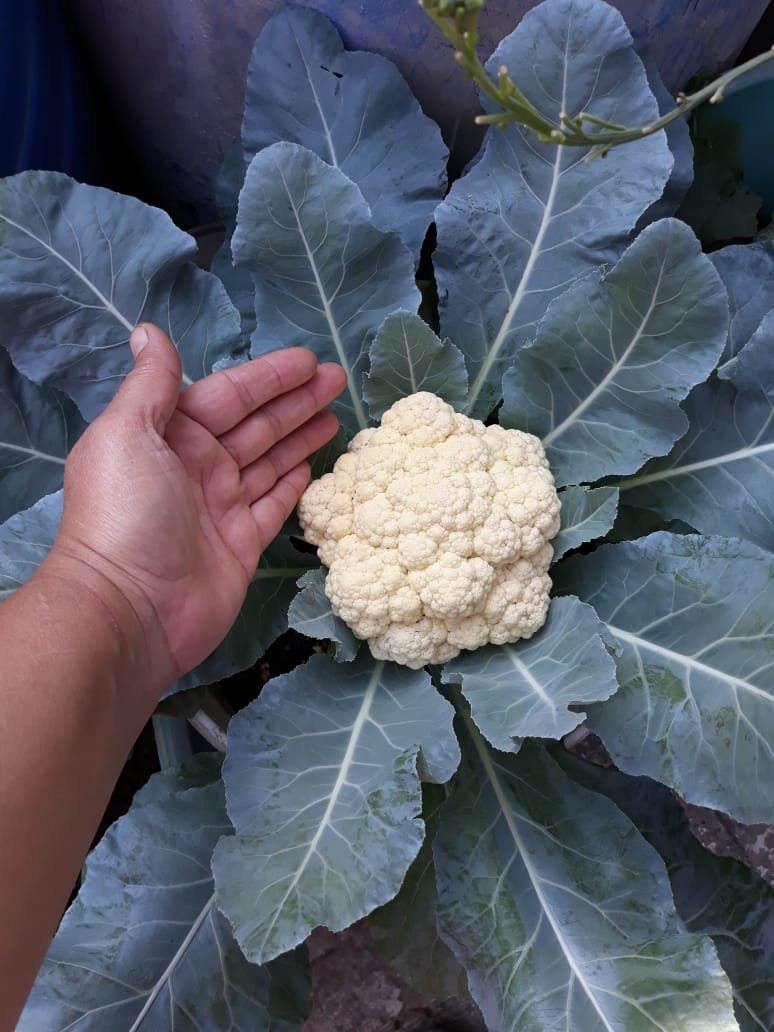
Fruits
Custard apple(सीताफळ), Pomegranate(डाळिम्ब), Watermelon (कलिंगड), Muskmelon (खरबूज)
Flowers
Rose, Marigold (झेंडू), Vinca (सदाफुली), Adenium, Office-time, Shevanti (शेवंती), Tagar (तगर), Koranti (कोरांटी), Tuberose(निशिगंध), Mogara(मोगरा), Brahmakamal(ब्रह्मकमळ), Cock’s comb
Concluding Words
As the quote by an unknown monk from 1100 AD goes…
“When I was a young man, I wanted to change the world.
————-
Now, as an old man, I know the only thing I can change is myself.
And suddenly I realize that if long ago I had changed myself, I could have made an impact on my family.
My family and I could have made an impact on our town.
Their impact could have changed the nation and I could indeed have changed the world”.
This is what Sarika and her fellow gardeners are doing. It is not only that her family eats fresh, healthy and toxic chemical-free vegetables. Picture is much bigger.
Kitchen waste from her home is utilized in her garden. Kitchen waste that would have rotten in a dump-yard; now nourishes the soil.
Licheate from the rotting kitchen waste in dump yard would have flown into some water source, polluting it; now boosts the plant growth.
Dry leaves that would have been burnt adding to air pollution; now aid the soil.
She has set an example to the kids by her action; they are growing to be environmentally-sensitive citizens.
Sarika’s decision to create a garden has helped reduce water and air pollution; has added to soil health and is ensuring 2 environmentally-sensitive future citizens for this planet.
What if more and more of us follow Sarika’s example? Well!! We change the world 😊




